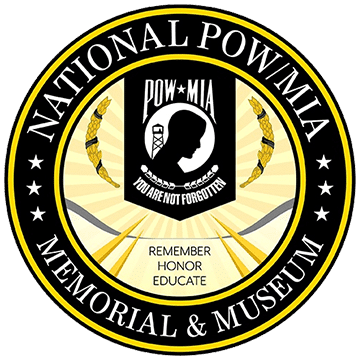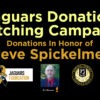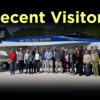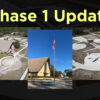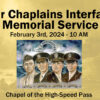The first step to creating a multimillion dollar national memorial on the site of a former jet base on Jacksonville’s Westside is to refurbish a chapel that once held memorial services for pilots who never returned from war.
Sam Houston was shocked by what he found a couple of months ago when he walked through the doors of that chapel at the former Cecil Field Naval Air Station.
The building that hosted so many joyous occasions like marriages for military personnel and where fallen pilots were remembered by tearful family members had been turned into a city of Jacksonville storage facility.
“I had two big shocks in my life at Cecil Field,” Houston said this week. “One was when they called and said it was on the closure list, the other was when I walked into the chapel two months ago and it was a storage shed.”
Houston was the commanding officer at the master jet base in 1993 when he got the call to come to Washington, where he was told there was nothing he could do to prevent the base from being closed.
Houston now is chairman of the board for a nonprofit hoping to revive the chapel and put the surrounding area back on the map with a national memorial for prisoners of war and missing-in-action service members.
Organizers said they think it will take $10 million to $15 million to develop the land, and more money will be needed to build a museum that is still in the early planning stages.
The first major hurdle in the process came June 27 when the Jacksonville City Council approved a lease between the city and the Cecil Field POW/MIA Memorial Inc. The lease will become official when Mayor Lenny Curry signs off on the ordinance, but progress is already being made at the property.
The boxes and clutter piled high in the chapel have been removed, and organizers envision wedding ceremonies and funeral services in the chapel again within a year.
There are no pews in the building yet, but when they are installed one idea is to mark off the front rows in honor of POW/MIA military personnel, said Mike Cassata, president of the nonprofit.
Cassata is the one who first realized the condition of the property surrounding the chapel was in disarray and quickly jumped to bring people together who had fond memories of Cecil Field’s glory days. His father was stationed at Cecil when Cassata was a boy, so he said the former base holds a special place in his heart.
He’s quickly learned he’s not the only one who feels that way. The Rotary Club of North Jacksonville is spearheading the project, with collaboration from other Rotary organizations in the district.
Cassata said there are several veterans involved in the project who feel the former base has been forgotten.
“That’s what upsets me is there is all this military history here and nobody is preserving it,” Cassata said as he walked through the property with general contractor Doug Register and chaplain Patrick Archuleta.
Archuleta said Monday he couldn’t believe how quickly the chapel was cleaned out, and he started making plans with Register about things they could do to make it a holy place once again.
“The first time I walked in here it was stacked up with junk,” he said of the building that will one day be renamed the “Chapel of the High-Speed Pass.”
Dennis “Dizzy” Gillespie was a pilot at Cecil when it was one of the busiest air fields in the country, and he was the one who suggested the chapel’s name.
“They would treat Cecil just like an aircraft carrier,” Gillespie said. “When you took off or landed at Cecil you always simulated coming back to the carrier.”
That “high-speed pass” came with a rush of adrenaline where the pilots would push their jets to full speed about 800 feet above the ground. They screeched to a halt on the runways just like they were landing on carriers on the middle of the ocean.
Gillespie said later in life a pilot named Pat “Bonzo” Lee, who fancied himself a musician, wrote a song called “The Church of the High-Speed Pass” because of an old pew in a hangar down in Green Cove Springs.
When Gillespie heard the group planned to restore the old chapel, the song came back to his mind right away. “It’s an incredible song about flying around an aircraft carrier,” he said. “It’s something that means a lot to pilots around here.”
Once the chapel is restored the project will move on to the rest of the property.
The plan is to use the old theater across the street from the chapel as the initial memorial center, but eventually they want to clear out a section of trees and build a facility that can grow to as big as 150,000 square feet.
Houston said when Cassata first came to him he wanted to expand on the current memorial known as the Hero’s Walk and Freedom Trees. It’s made up of a stretch of land adjacent to the chapel dedicated in 1973 that now consists of markers and trees planted for 16 Navy aviators who were stationed at Cecil Field and then classified as prisoners of war or missing in action during the Vietnam War and first Gulf War.
“I said, ‘That’s not sustainable, that’s not big enough,’ ” Houston said, remembering his first meeting with Cassata.
He said he suggested a wall for the 83,000 veterans still missing in action, but now the organizers are thinking it might be better to build something using more advanced technology. Houston said they would like to break the memorial down by state and in some way update the names to reflect when the remains are returned home for proper burials.
Houston said that way each state can contribute information — and possibly funding — to the memorial. He said the fundraising effort needs to get going immediately because the ambitious plans need capital to make them a reality.
“We had to hold off on fundraising because we didn’t have a lease,” Houston said. “The lease has been in the making for over a year, and we couldn’t go out and ask for money because if the lease didn’t come through we were stuck.”
Anyone interested in donating money can visit the group’s website powmiamemorial.org. The site is still developing, and Cassata said they will soon have a form where people can apply to volunteer their services to the project as well.
Cassata is working with people who served at Cecil and family members with loved ones represented in the Hero’s Walk.
Cynde Covington’s father, Cmdr. Fred Wright, is one of the 16 pilots already memorialized. She said Cassata has been good about asking for input from her family on the conceptual plans for the future. She said she likes to leave the major planning up to the professionals, but she isn’t shy about offering advice on some of the smaller things.
“The little tiny details of the design really touched my heart in a lot of ways,” she said. “Some of those details moved me to tears.”
Those details include a potential static display of an A-7 Corsair II at the front of the museum and a static display of an F/A-18 Hornet at the front entrance to the property.
The aircraft carrier USS Saratoga was a ship that meant a lot to many Cecil pilots, so Cassata said he would like to incorporate the ship on the property in some way.
Right now the plan is to have a reflection pool with a large dock made to simulate a scaled-down replica of the Saratoga’s flight deck.
Covington said that’s one detail that will really mean a lot to her.
“When you talk about that being the Saratoga deck, that’s the ship that my daddy flew off of,” she said. “The Saratoga is always going to have a special place in my heart.”
